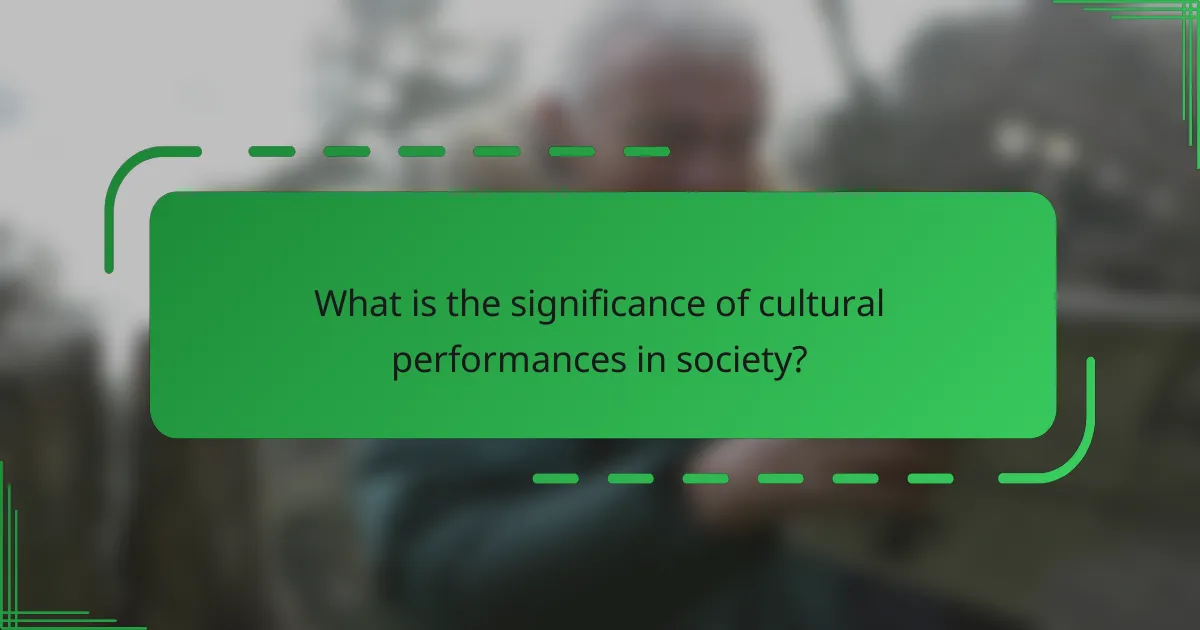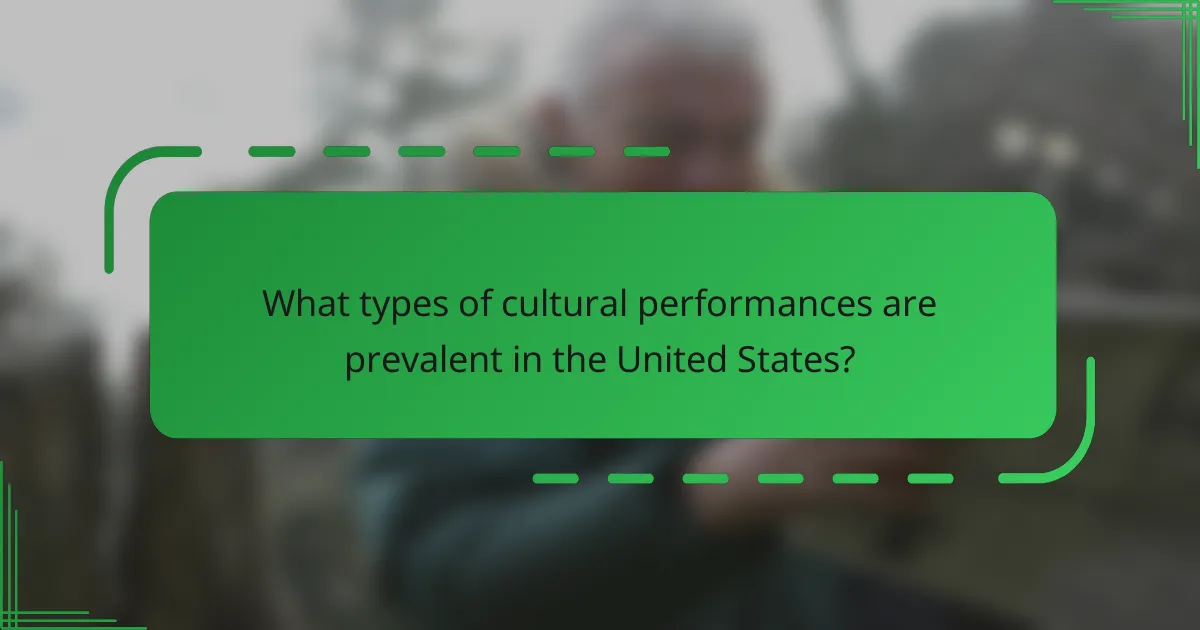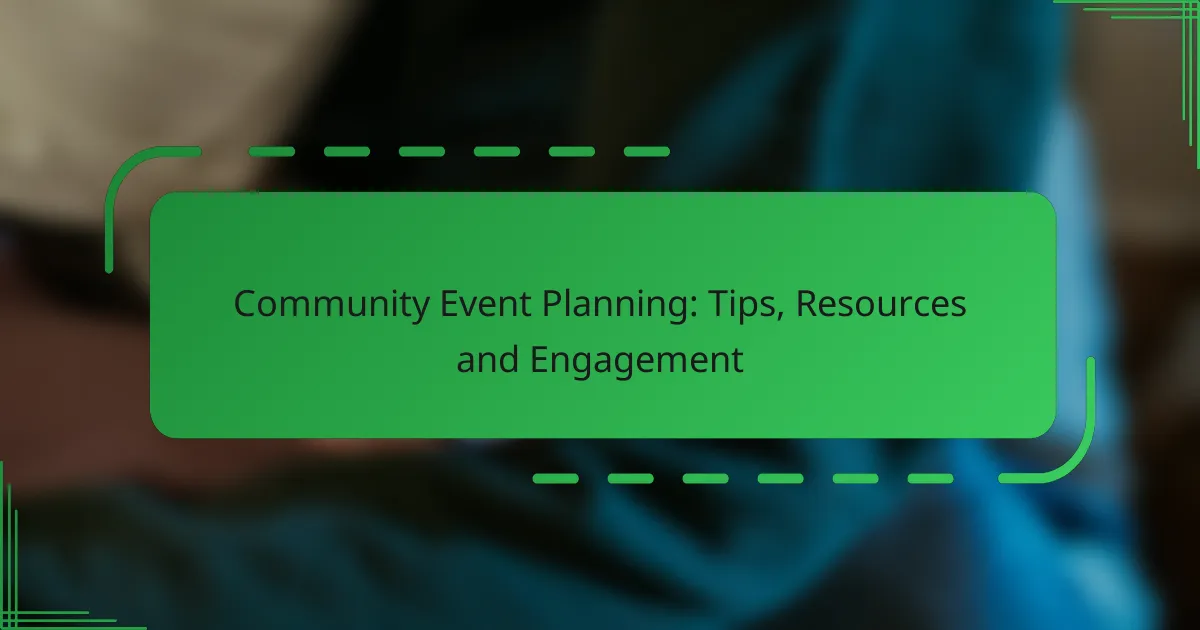Cultural performances are vital expressions of shared beliefs and traditions, serving to preserve heritage and strengthen community bonds. In the United States, these performances encompass diverse art forms such as theater, dance, music, and storytelling, each enriching the cultural tapestry. Additionally, they play a significant role in boosting local economies by creating jobs and attracting tourism, ultimately fostering community engagement and economic growth.

What is the significance of cultural performances in society?
Cultural performances hold significant value in society as they serve as a means of expressing shared beliefs, traditions, and values. They play a crucial role in preserving cultural heritage while fostering connections among individuals within a community.
Promotion of cultural heritage
Cultural performances are vital for promoting and preserving cultural heritage. They showcase traditional art forms, music, and dance that reflect the history and identity of a community. Events like folk festivals or traditional theater not only entertain but also educate audiences about their cultural roots.
For instance, a local dance festival may feature performances that highlight regional dances, costumes, and stories, allowing younger generations to connect with their ancestry. This preservation is essential in maintaining cultural diversity in an increasingly globalized world.
Fostering community identity
Cultural performances help foster a sense of community identity by bringing people together around shared experiences. When individuals participate in or attend cultural events, they strengthen their bonds and create a collective identity that enhances social unity.
Community events, such as parades or local theater productions, serve as platforms for individuals to express their unique identities while contributing to a larger narrative. This shared experience can lead to increased pride and belonging among community members.
Encouraging social cohesion
Cultural performances encourage social cohesion by promoting inclusivity and understanding among diverse groups. They provide opportunities for dialogue and interaction, breaking down barriers between different cultural backgrounds.
For example, multicultural festivals often feature performances from various ethnic groups, allowing attendees to experience and appreciate different traditions. This exposure fosters empathy and respect, which are essential for harmonious coexistence in diverse societies.
Enhancing emotional expression
Cultural performances serve as powerful outlets for emotional expression, allowing artists and audiences alike to convey and experience a wide range of feelings. Through music, dance, and theater, individuals can explore complex emotions and share personal stories.
For instance, a poignant theatrical performance may resonate deeply with viewers, prompting reflection on their own experiences. This emotional connection can lead to healing and personal growth, reinforcing the importance of cultural expression in society.
Driving economic growth
Cultural performances can significantly contribute to economic growth by attracting tourism and generating revenue for local businesses. Events such as music festivals or art exhibitions draw visitors, creating opportunities for spending in hospitality, retail, and entertainment sectors.
Moreover, investing in cultural initiatives can stimulate job creation in the arts and related industries. Communities that prioritize cultural performances often see a boost in local economies, making them more vibrant and sustainable.

What types of cultural performances are prevalent in the United States?
In the United States, cultural performances encompass a variety of art forms that reflect the nation’s diverse heritage. Key types include theater and drama, dance performances, music concerts, festivals and parades, and storytelling events, each contributing uniquely to the cultural landscape.
Theater and drama
Theater and drama are significant cultural performances in the U.S., showcasing a range of styles from classical plays to contemporary works. Major cities like New York and Chicago host renowned theaters that attract both local and international talent.
Community theaters also play a vital role, offering opportunities for local artists to engage with their audiences. These performances often reflect social issues, making theater a powerful medium for dialogue and change.
Dance performances
Dance performances in the U.S. vary widely, from ballet and modern dance to hip-hop and folk traditions. Major dance companies, such as the New York City Ballet and Alvin Ailey American Dance Theater, present innovative works that push artistic boundaries.
Local dance festivals and competitions provide platforms for emerging dancers, fostering community engagement and cultural exchange. Dance serves not only as entertainment but also as a means of preserving cultural heritage.
Music concerts
Music concerts are a cornerstone of American cultural performances, featuring genres like rock, jazz, country, and hip-hop. Major music festivals, such as Coachella and Lollapalooza, draw large crowds and showcase both established and up-and-coming artists.
Local venues host smaller concerts, allowing fans to experience live music in intimate settings. These performances often reflect regional musical styles, contributing to the rich tapestry of American music culture.
Festivals and parades
Festivals and parades celebrate cultural diversity and community spirit across the United States. Events like Mardi Gras in New Orleans and the Rose Parade in Pasadena attract thousands of participants and spectators, highlighting local traditions.
These gatherings often include music, dance, and food, creating a vibrant atmosphere that fosters cultural pride. They serve as important platforms for cultural expression and community bonding.
Storytelling events
Storytelling events are an intimate form of cultural performance that emphasize the art of narrative. These gatherings often feature personal stories, folklore, and historical tales, allowing audiences to connect deeply with the storyteller’s experiences.
Organizations and festivals dedicated to storytelling promote this art form, encouraging participation from diverse communities. Storytelling not only entertains but also preserves cultural heritage and fosters understanding among different groups.

How do cultural performances impact local economies?
Cultural performances significantly impact local economies by creating jobs, attracting tourists, and supporting local businesses. These activities generate revenue and foster community engagement, ultimately enhancing the economic landscape of a region.
Job creation in the arts sector
Cultural performances lead to job creation in various roles, including performers, technicians, and administrative staff. The arts sector often employs a diverse workforce, providing opportunities for both skilled and entry-level positions.
In many regions, the growth of cultural events can result in hundreds of new jobs, particularly during peak seasons or festivals. This not only helps reduce unemployment but also encourages skill development in the community.
Boosting tourism revenue
Cultural performances attract tourists, which boosts local tourism revenue. Events such as music festivals, theater productions, and art exhibitions draw visitors who spend money on accommodation, food, and entertainment.
For example, a well-promoted cultural festival can increase visitor numbers by significant percentages, leading to millions in additional revenue for local businesses. This influx can stimulate further investment in tourism infrastructure.
Supporting local businesses
Cultural performances create a ripple effect that supports local businesses, from restaurants to hotels. When events are held, attendees often seek dining and lodging options nearby, directly benefiting these establishments.
Collaboration between event organizers and local businesses can enhance the overall experience for visitors and create promotional opportunities. This symbiotic relationship helps sustain the local economy beyond the duration of the event.
Increasing public funding for the arts
Successful cultural performances can lead to increased public funding for the arts, as governments recognize their economic and social value. When performances demonstrate a positive impact on local economies, policymakers may allocate more resources to support similar initiatives.
Communities can advocate for funding by showcasing the economic benefits of cultural events, which can include job creation and tourism growth. Engaging local stakeholders in discussions about the arts can further enhance funding opportunities.

What are the criteria for evaluating cultural performances?
Evaluating cultural performances involves assessing various criteria that reflect their artistic and social significance. Key factors include artistic quality, originality, audience engagement, and cultural relevance.
Artistic quality and originality
Artistic quality refers to the technical skill and creativity displayed in a performance. Originality is crucial, as it distinguishes a performance from others, showcasing unique interpretations or innovative approaches to traditional forms.
When evaluating artistic quality, consider elements such as choreography, musical composition, and visual aesthetics. Originality can be assessed by looking at how a performance incorporates new ideas or reinterprets existing cultural narratives.
For example, a dance performance that blends classical techniques with contemporary styles may score higher on originality than one that strictly adheres to traditional forms. Audiences often appreciate fresh perspectives that challenge conventional norms.



